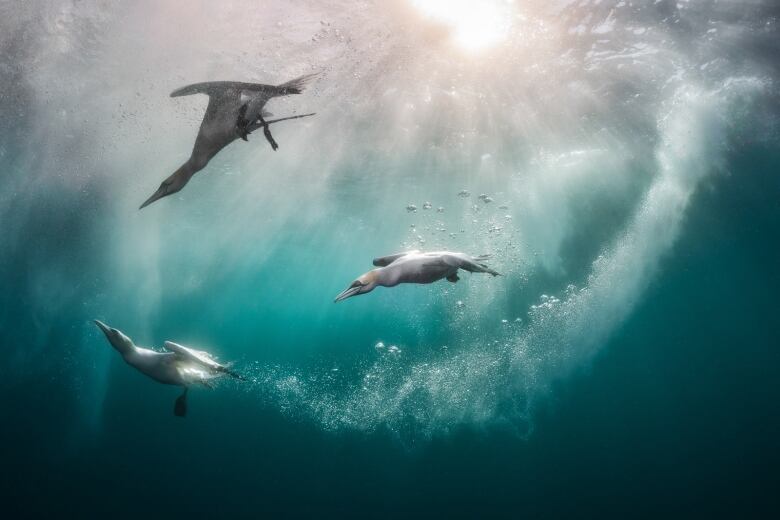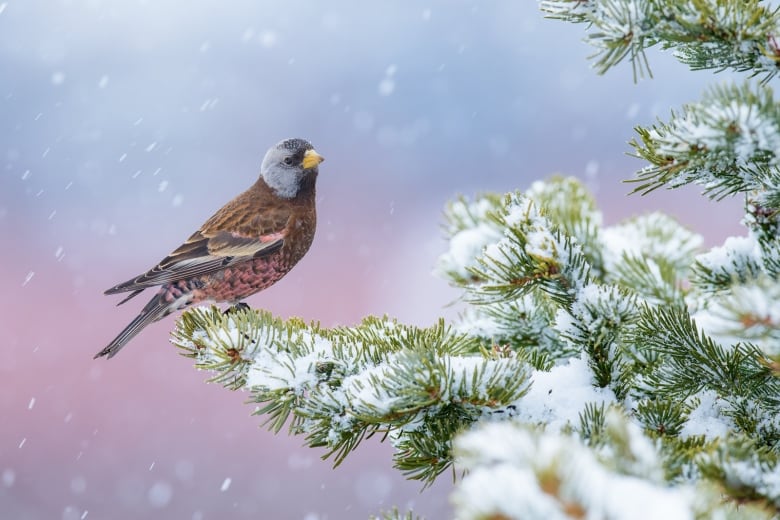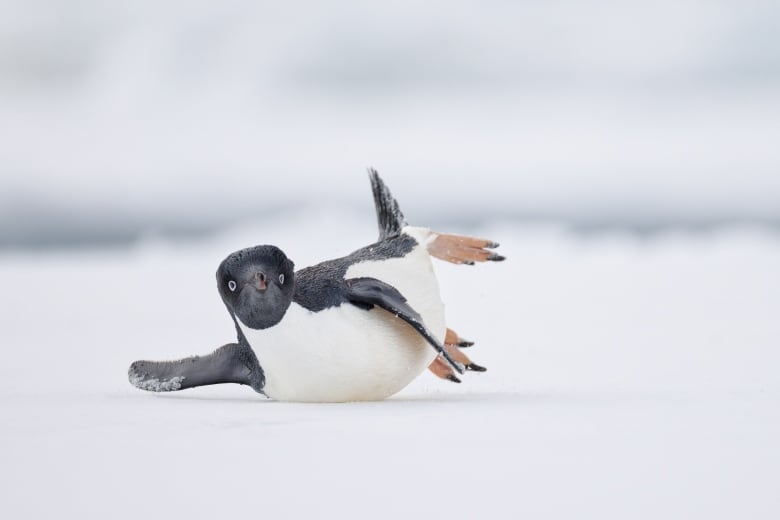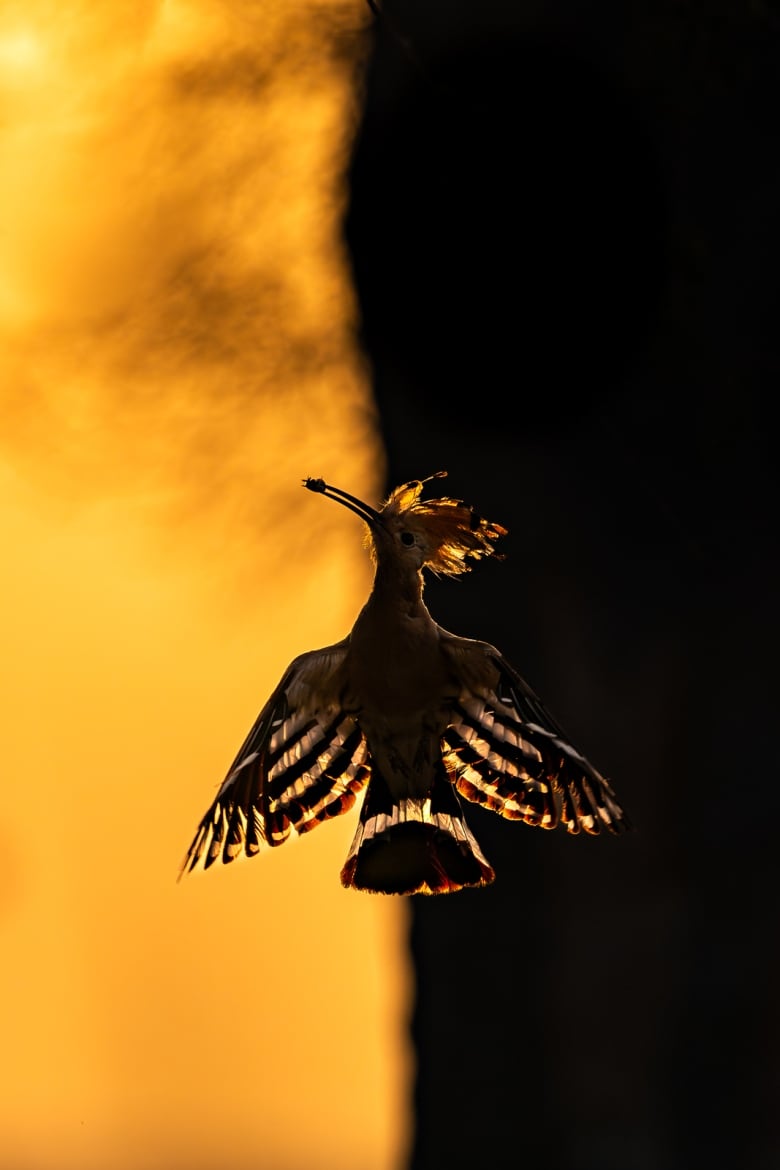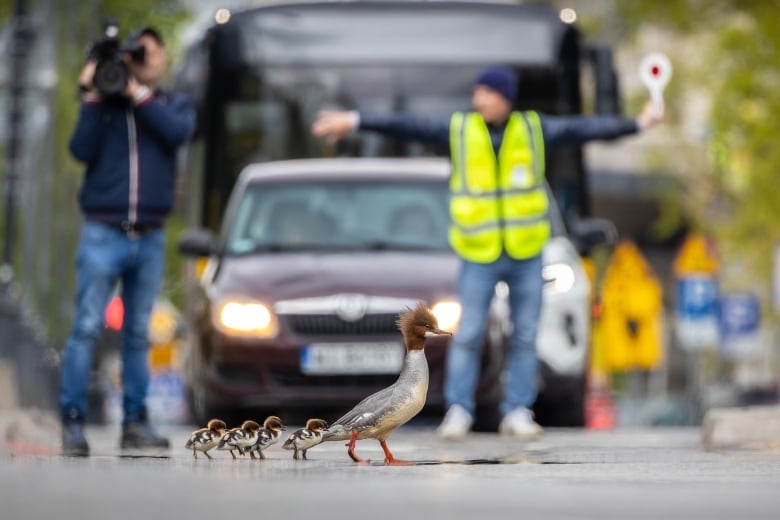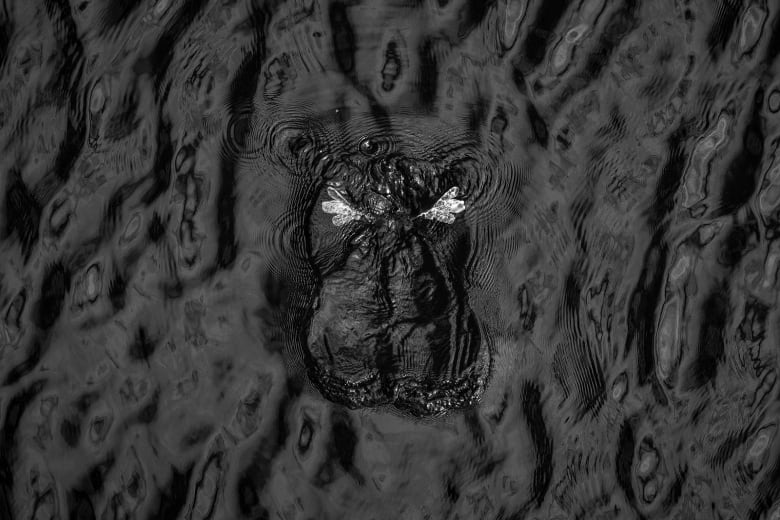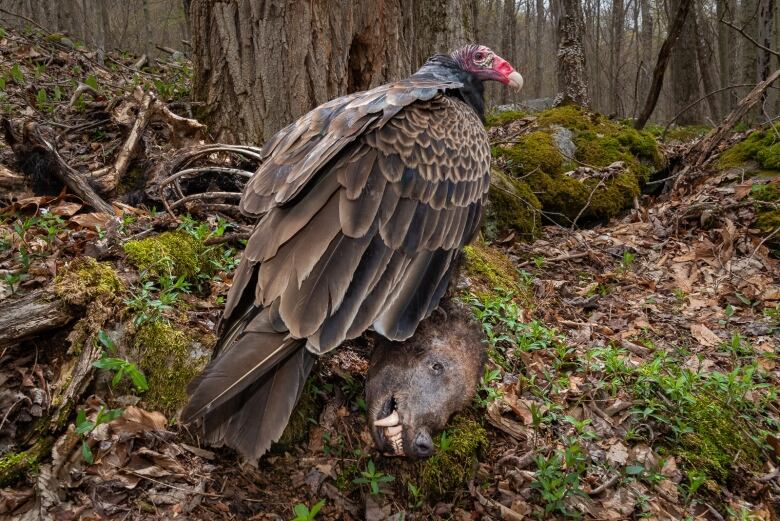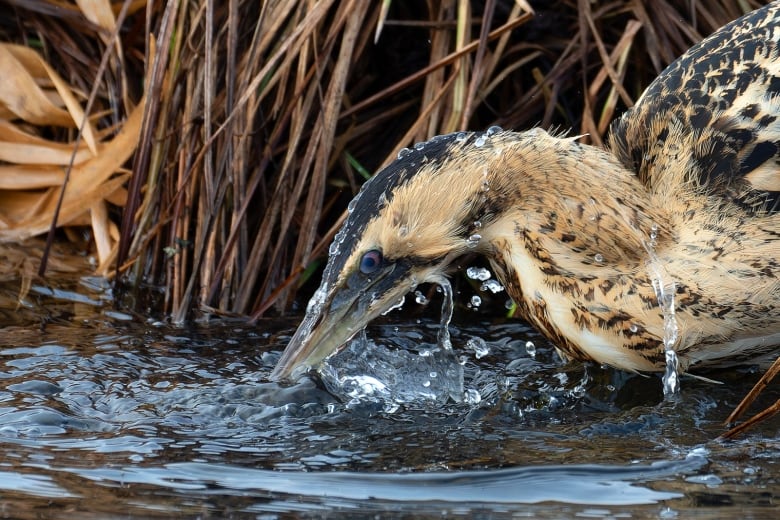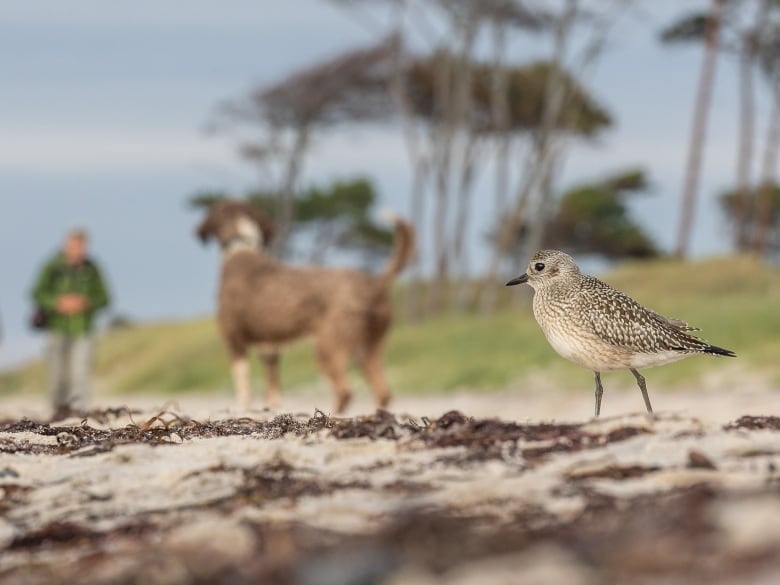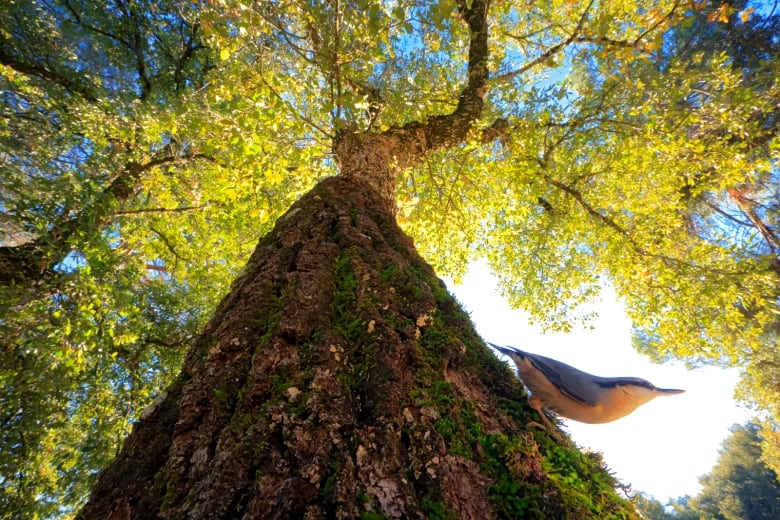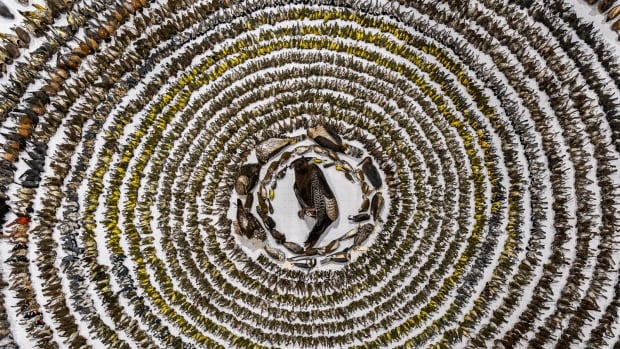
As It Happens6:26Picture of 4,000 dead birds in Toronto wins international photography award
All 4,000 birds in Patricia Homonylo’s award-winning picture died preventable deaths, the Toronto conservation photographer said.
The image, called When Worlds Collide, shows the bodies of birds that fatally collided with buildings in Toronto last year.
It earned Homonylo this year’s Bird Photography of the Year award.
“I want people to be shocked by this image,” Homonylo told As It Happens host Nil Köksal. “I want them to really think about what they’re seeing.”
‘Beautiful and tragic’
The picture features a wild turkey at its centre, surrounded by concentric circles of smaller and smaller birds, including hawks, owls, warblers, blue jays and more.
Their bodies were collected and arranged by members of the Fatal Light Awareness Program (FLAP), a Canadian charity where Homonylo volunteers, which helps birds injured in these kinds of collisions.
“Unfortunately, most of the birds they find are dead. [But] those bodies are never left behind,” Homonylo said.
“Once a year, the volunteers get together and they create this beautiful and tragic image of the birds called The Layout. And that’s what you’re looking at.”
Environment Canada estimates as many as 42 million birds die from collisions with windows every year in this country. Already this year, FLAP has recorded 331,718 fatal bird collisions in North America.
And a study published last month in the journal Plos One found that window collisions are even deadlier for birds than previously believed, and that only 40 per cent of birds injured this way in the northeastern United States survived.
What can you do?
Homonylo says it doesn’t have to be this way.
“What I really hope that people understand and take away is there’s something they can do,” she said.
All over Canada, volunteers, conservationists and bird scientists are working to prevent these collisions, CBC News reported last week in its feature story, Flight Risk.
“I know there’s killing in nature, but this is very preventable and it’s just very sad,” Montrealer Doris Potter told reporter Benjamin Shingler.
Potter helped advocate for a new bylaw in the Montreal borough of Saint-Laurent that forces companies to reduce the reflectivity of the glass surface on all new large buildings.
FLAP says Canadians who are concerned about birds should follow Potter’s lead and push their lawmakers to enact legislation that enforces bird-safe building standards.
And on a personal level, the charity urges people to make their own windows and glass structures bird safe by covering them in paint, decals, string, film or other materials.
But perhaps the easiest thing people can do, Homonylo says, is turn off the lights. Migratory birds use starlight as a guide, and the lights emanating from cities can throw them off course.
Homonylo says her photo may be upsetting, but there’s a positive aspect to it as well.
“This is about honouring lives lost,” she said. “I hope people take a solemn moment of contemplation about that as well. We are less if we lose our birds.”
The other winners
The Bird Photography of the Year bills itself as “a celebration of avian beauty and diversity, and a tribute to the flexibility and quality of today’s modern digital imaging systems.”
Homonylo beat 23,000 submissions to earn the top prize of £3,500 ($6,270 Cdn).
Gold, silver and bronze awards are also given out across eight categories for adults, and three for youths. Homonylo’s When Worlds Collide also won gold in the Conservation category.
See the rest of this year’s gold winners below.
